Separate but Equal
The history of African Americans in higher education directly relates to the manner minorities were historically treated in the US society.
Prior to the emergence of the Civil Rights Movement in the 1960’s, the concept of “separate but equal“ which was upheld by the Court’s decision on Plessy v. Ferguson case in 1896 and which dominated in multiple spheres – the major population did not believe in social integration but allowed minorities to live their lives without interfering with “white business” including education (Masters, n.d., p. 163).
In 1954, the US Supreme Court first recognized that the doctrine of “separate but equal” should not be present in the system of public education and expressed the idea of racially integrated society and provision of equal opportunities in its opinion on the case of Brown v. Board of Education (Washburn, 1994).
In its conclusion on the case, the Supreme Court stated that integrated schools are potentially more effective in providing a better education for diverse students.
Although the constitutional mandate of Brown and some other legal cases substantially supported the positive changes in the educational system and provoked the increase in representation of black students in education, at the end of the 20th century, there were many disparities in wealth distribution between blacks and whites which maintained from one generation to another (Oliver & Shapiro, 1995).
The controversies between the positive perspective on integrated education associated with multiple benefits and the persistent hostility between different racial populations correlated with socially unequal practices continue to challenge the treatment of racial problems in colleges even today.
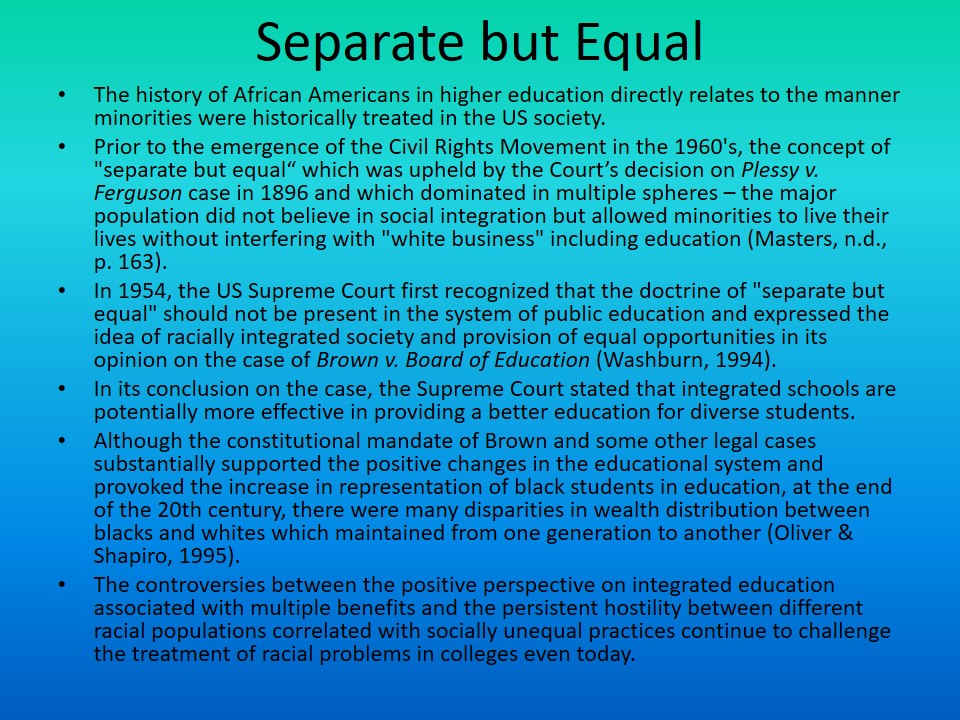
The Civil Rights Movement
Throughout the 1950’s and 1960’s, the Civil Rights Movement was gaining momentum, and such well-educated leaders like Martin Luther King, Malcolm X, and others fought for equal opportunities for African Americans and demolition of Jim Crow regime (Masters, n.d.).
According to Morris (1999), the major prerequisites of the Civil Rights Movement and the consequent changes in the education system are related to the internal development of the Black community and the spread of African American citizens across the southern and northern cities.
As the struggle for equality provoked some advances in the US education system and policies, the first African American students – James Meredith, Vivian Malone, and James Hood, – enrolled in historically white colleges (Masters, n.d.). Nevertheless, they faced a lot of verbal and physical harassment indicating that the hostility ingrained in the social mindset cannot be erased overnight.
Partially due to the hardships the black students faced in the desegregated colleges at the initial stages of racial integration in education, some educators and researchers suggested that the southern racially identifiable schools which provided a supportive environment for African American students were better for them (Washburn, 1994).
Since in this way, some predominantly black colleges, e.g., in Mississippi Valley State, continued the unconstitutional practice of segregation, the state authorities proposed a plan to attract more white students to campuses and balance diverse student populations by developing new programs (Washburn, 1994).
At the same time, the analysis of statistics collected throughout the period between 1976 and 2004 reveals that the number of African American students enrolling in various predominantly white colleges across the country has increased by 103 percent, and the number of Hispanic students’ admissions has grown by 461 percent (Masters, n.d.).
The statistical data makes it clear that opportunities for an excellent college education are on the rise for diverse student populations. However, there is still a significant imbalance in the representation of African Americans in higher education (Masters, n.d.).
It means that although theoretically education was desegregated during the 1960’s, the racial tensions in the system of higher education continue to exist making it clear that the country is “living in the shadow of history” (Masters, n.d., p. 168).
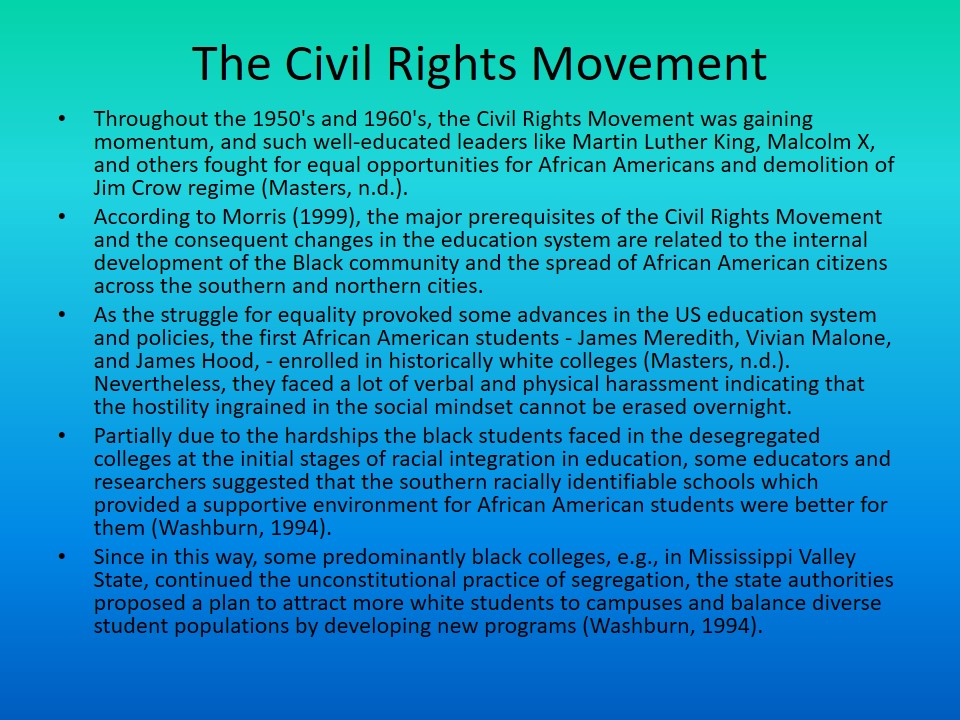
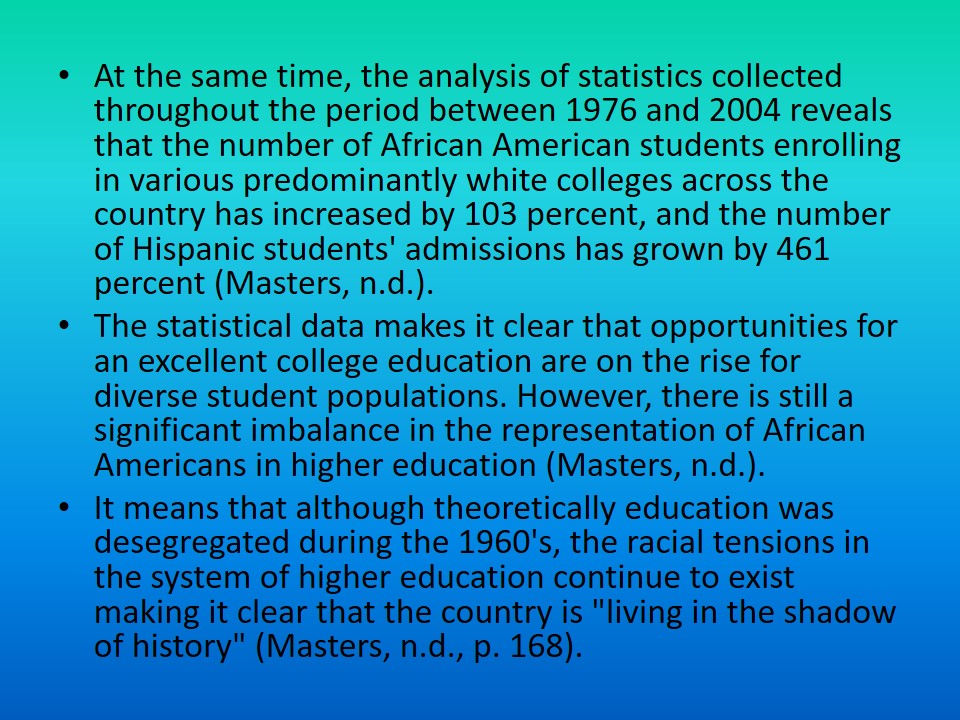
Representation of African Americans in Higher Education
According to Masters (n.d.), underrepresentation of blacks in higher education may be positively correlated with their positioning and capacity of decision making in the field of education because “if there is no representation with regards to decision making power, blacks are again subservient to commonly white ideals” (p. 163).
The presence of African Americans in the US Congress was limited even when the constitutional orientation towards racial equality was adopted in the second half of the 20th century. It is observed that there were only five African American senators in the United States since 1990 while the total number of members is 435 (Masters, n.d.).
It is also observed that, over a significant time period, African Americans became heads of universities primarily in historically black universities including Jackson State University, Alabama A&M University, and some others, while the majority of prestigious US universities are mostly run by white males (Masters, n.d.).
The number of black professors remains low as well. Even in the 21st century, the nation-wide rate of African American full-time faculty representation is 5.2 percent (Masters, n.d.).
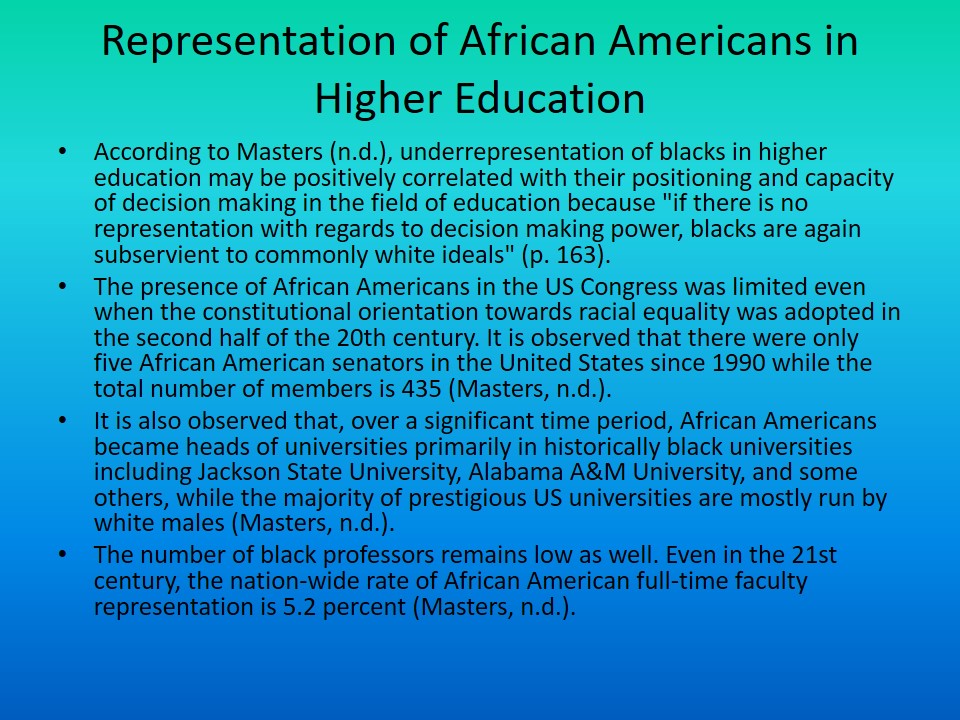
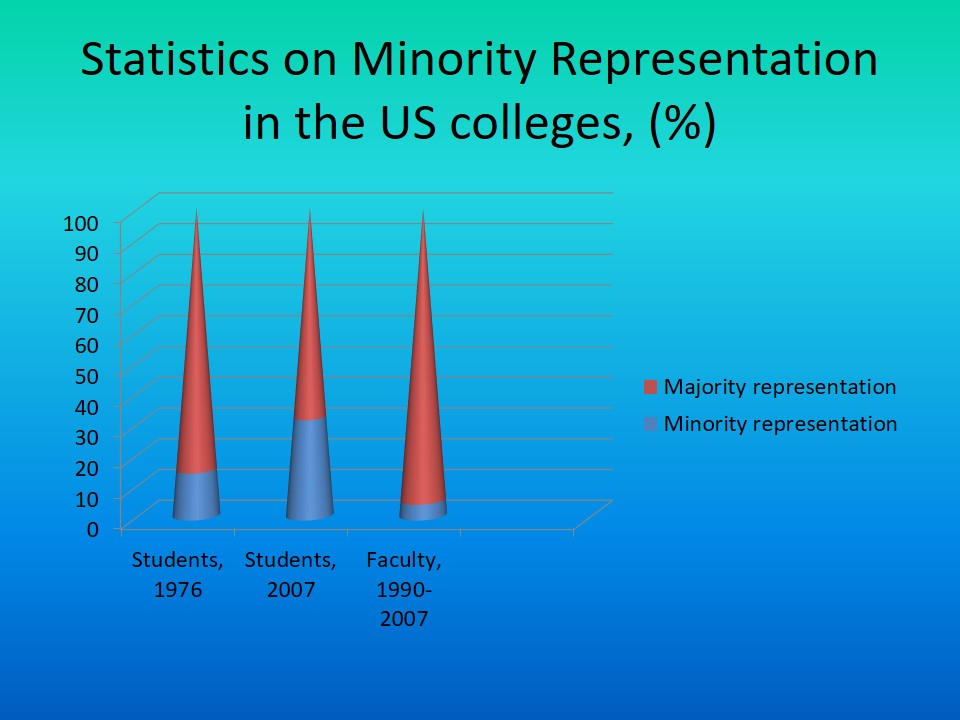
Summary
The literature review makes it clear that historically the minor racial groups are more disadvantaged in comparison to the major white population in terms of wealth holdings and opportunities in multiple spheres of life (Oliver & Shapiro, 1995).
However, the collective actions of the African American community members have triggered some favorable shifts in social structures and institutions including education.
Although some racial prejudices continue to exist after enacting the initiatives aimed to desegregate education and the echoes of Jim Crow era still influence the representation rates in the higher education system, the increased number of black students in the historically white universities and colleges indicate that the situation has improved.
Nevertheless, it is important to increase the number of African American leaders and academics who can influence policy formation and development of education plans in order to balance the African American representation and minimize the disparities that still exist.
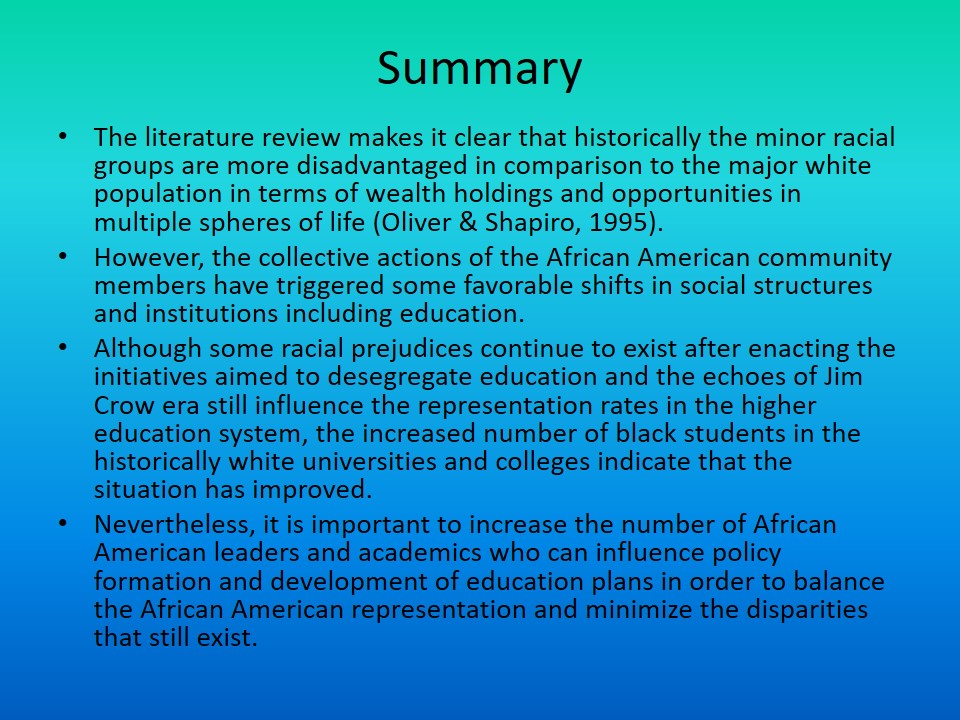
References
Masters, B. (n.d.). The underrepresentation of blacks in higher education. Web.
Morris, A. D. (1999). A retrospective on the civil rights movement: Political and intellectual landmarks. Annual Review of Sociology,25(1), 517-539. Web.
Oliver, M. L., & Shapiro, T. M. (1995). Black wealth/white wealth: A new perspective on racial inequality. New York: Routledge.
Washburn, J. A. (1994). Beyond Brown: Evaluating equality in higher education. Duke Law Journal,43(5), 1115. Web.